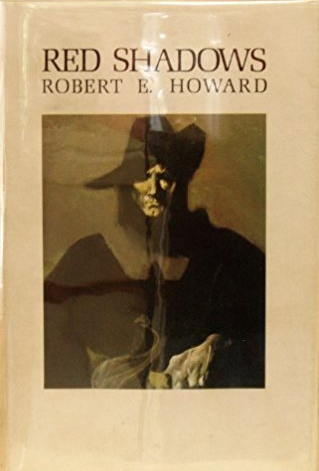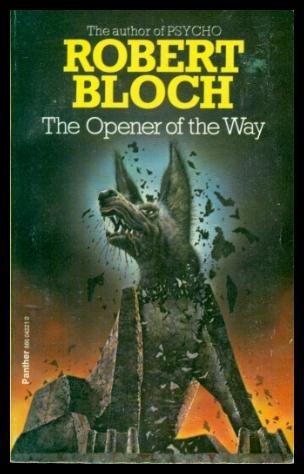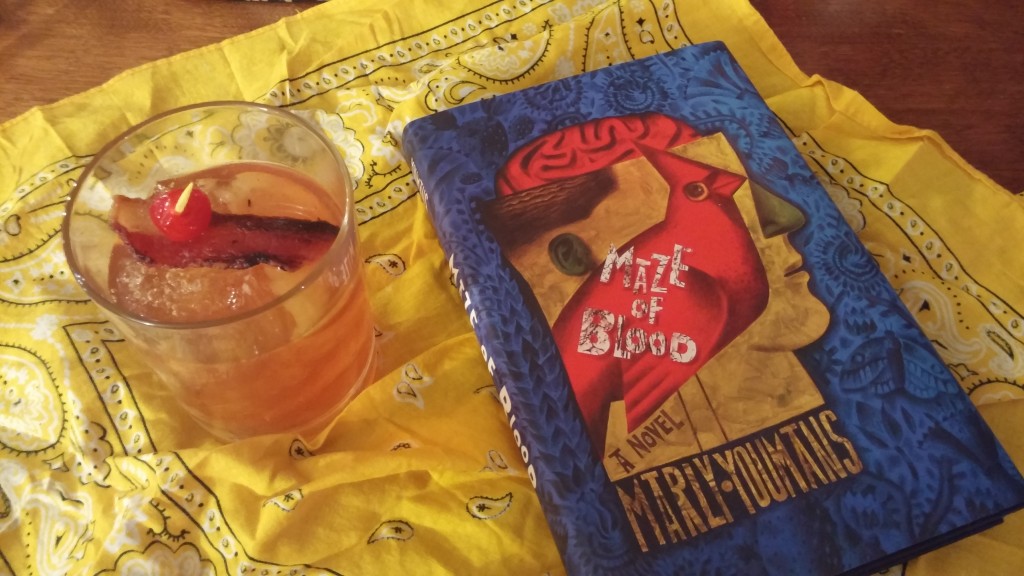
Red Shadows contains Robert E. Howard’s Solomon Kane stories.
By Scott A. Cupp
This is the 206th in my series of Forgotten Books.
It has been a hectic year! As I write this, tomorrow will mark one year since my wife and I will have been in our new home for 12 months. Yowza! Books are still not totally organized, but I am getting ready for ArmadilloCon and the upcoming World Fantasy Convention in San Antonio. So many books to look through, so many to locate and get ready.
I recently went to Robert E. Howard Days in Cross Plains. I know I write too much about that event, but it is one of my favorite things to do each year. I have been four times now and had a great trip each time.
This year, I managed to acquire Skullface and Others by Howard. This wonderful Arkham House book with its legendary cover by Hannes Bok has been on my want list ever since I saw it listed in the copyrights of the Lancer Conans. So, I only waited 50 years to get this one. But I have it now thanks to the amazing Jeffrey Shanks and a fabulous trade. It sits on my bookshelf about eight feet from where I am typing.
But what I have not mentioned as much is that at the same show I found a first edition of Red Shadows, the collection of Howard’s Solomon Kane stories published by Donald M. Grant in 1968 with a cover and interior picture by Jeff Jones. I have only wanted this one since 1973 or so.
My first encounter with Howard’s Puritan swordsman/adventurer was in the three Centaur Press paperbacks that I bought in 1971 while taking a bus from Amarillo to San Antonio after the wedding of my friend Henry Melton and his charming bride Mary Ann. I have had multiple copies of the book since then, but Henry and Mary Ann are still together some 46 years later. (I should mention Henry is a very good writer I have reviewed in my Forgotten Books column on several occasions. You should check him out!)
Anyway, I started reading the adventures of Kane on that bus ride home. They were memorable stories. Kane is a Puritan who has had an exciting life. He has been a privateer captain and explored much of the world. In these stories, he goes through Europe, England and Africa. The title piece, “Red Shadows,” in which Kane vows to avenge a woman’s death by finding her kidnapped sister, set up his trip to Africa. The African stories are my favorite. “Moon of Skulls” and “Hills of the Dead” feature Kane and his blood brother, the ancient witch doctor N’Longa.
A Puritan as blood brother to a pagan witch doctor seems hard to pull off, but Howard makes it work quite well. Kane is an honorable man and so is N’Longa. He has gifted Kane with an ancient engraved staff which can be used to bring N’Longa to wherever Kane needs help with supernatural problems. Oddly enough, a vampire city does not appear to be supernatural. But the staff still taxes his abilities.
I also enjoyed the pirate story “Blades of the Brotherhood,” where Kane challenges the Fishhawk, a notorious pirate and slaver. There is not a supernatural twist to the story, but Howard makes the action move along quite well.
The Kane stories are longer pieces with some good character development and I was sorry there were not more of them in this collection. Still, it was good to experience them all again. In the intervening 46 years, I had read the occasional story, comic book adaptation and watched the 2009 film. The stories are, by far, the best.
Give this one a shot in whatever form you find it. There are multiple sets out there, including the very nice Wandering Star hardcover (be prepared to take out a good sized loan for this one) or the Del Rey paperback of The Savage Tales of Solomon Kane. Both feature fabulous art from Gary Gianni that is worth the price of admission. Of course, there are other reprint editions. Solomon Kane is, behind Conan, one of Howard’s most popular characters. Check out his stories.
Series organizer Patti Abbott hosts more Friday Forgotten Book reviews at her own blog, and posts a complete list of participating blogs.




